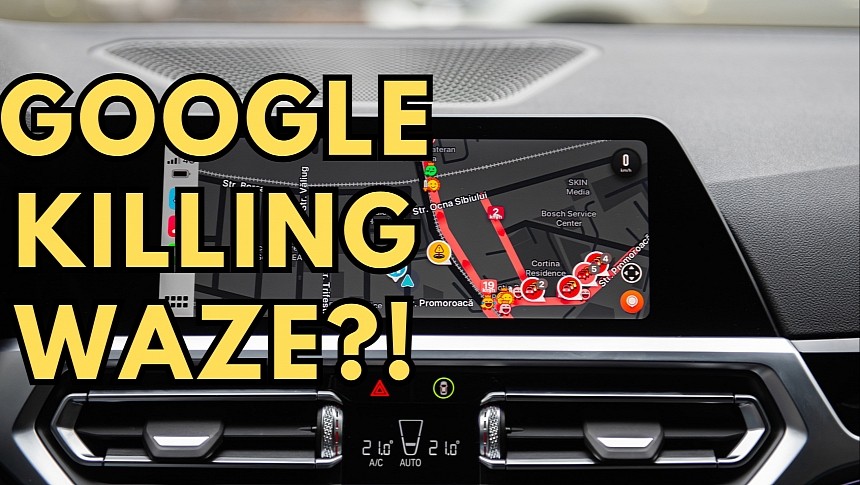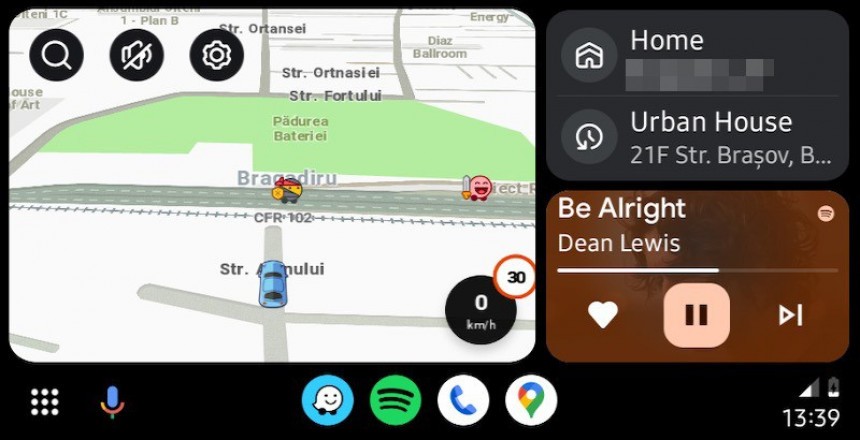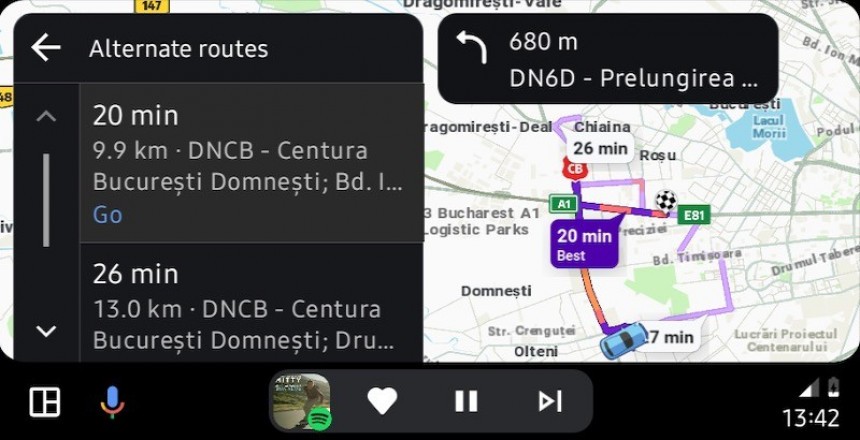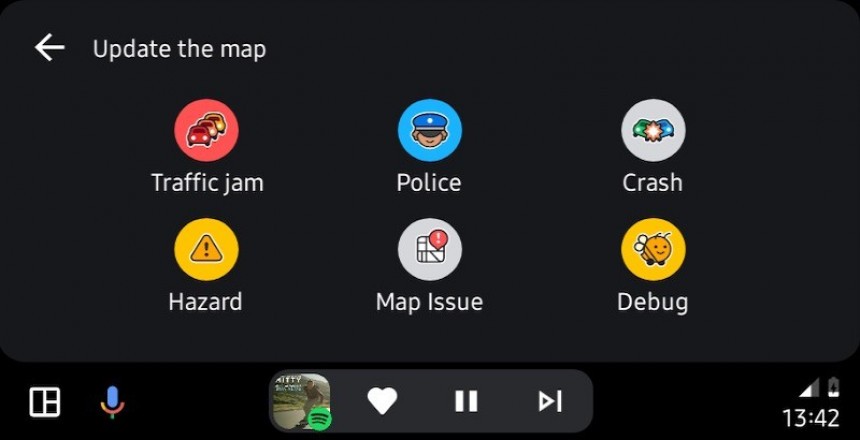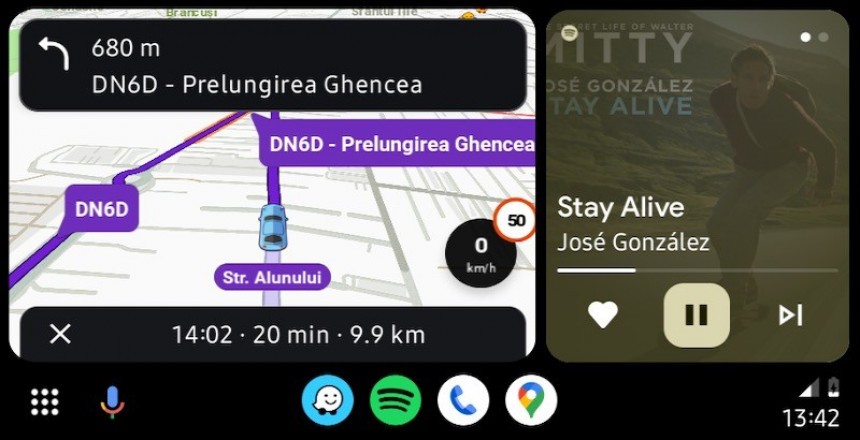Google bought Waze for $1.3 billion in 2013 and promised to let the company run independently despite overlapping with one of its key products.
Waze and the navigation component in Google Maps have a different purpose: to take people from where they are to where they want to go as fast and conveniently as possible.
Waze does this differently from Google Maps, packing the most advanced traffic incident reporting engine on the market. It allows users to send reports about what happens on the road, covering accidents, traffic jams, speed traps, potholes, weather, and many other categories that help drivers be prepared for their route.
Google Maps has slowly embraced a different direction, focusing more on its world exploration capabilities. It doesn't mean it dropped its navigation features, but the biggest improvements in the last few years were aimed at making it easier for users to discover the world from the comfort of their devices (the immersive view is living proof).
Waze has gone through a lot of changes lately (and its transformation is still underway), with some of the ideas introduced in beta builds and then rolling out gradually to the production channel, making the app significantly worse for part of the user base. The application dropped some report types, such as the police on the other side and vehicles stopped on the side of the road, and struggled with major bugs that made using it dangerous at certain times.
Not long ago, a dark mode glitch hitting CarPlay blocked the app from disabling the daytime interface at night, locking the map to the standard grey interface even in total darkness. Waze needed more than a month to ship a bug-fixing update despite the issue becoming very widespread and obviously creating a major shortcoming for using the app at night.
Google has also made organizational changes in Waze, moving the dev team working on the app under the same roof as the Google Maps developers. Earlier this year, it laid off the Waze marketing team, moving the application to Google Ads.
Many users believe these are signs that Google is getting ready to kill off Waze. Google Maps and Waze merging to create an almighty navigation app is an imagined scenario that keeps coming back regularly, with users believing it's a matter of time until Google figures out that investing in two similar navigation apps doesn't make sense financially.
Considering all the recent changes happening at Waze and the latest somehow controversial updates in the app, I asked around, and I believe I can finally answer some of the most pressing questions regarding Waze's future.
My contacts told me that Google "definitely isn't planning to kill off Waze." The company sees Waze as a unique product that must remain independent. Apple has also updated Apple Maps with incident reporting, but Google believes that Waze has established a niche that it dominates, with no other company offering a competing solution. If the competition in this market is getting fiercer and other big names, including Apple, greatly improve the incident reporting capabilities of their software, Google might eventually reconsider its strategy regarding Waze. Once the application starts losing market share, requiring more resources to develop new features and keep the lead in the market, "something will have to change," my sources tell me.
"Could this include Waze becoming a part of Google Maps?" I asked. I didn't get a clear answer, but I'm being told Google doesn't want to combine its two navigation apps for one clear, simple, and obvious reason: Waze would make Google Maps more cluttered, bringing more features to an already complex application.
Users might feel overwhelmed by the feature lineup Google Maps throws at them, so the incident reporting capabilities might not get much traction. They're a Waze thing, which is why Google believes Waze should remain a stand-alone offering.
"What's with all the changes happening at Waze?" I continued.
The reason is simple. The Waze team has limited resources, so they must prioritize certain tasks within the company. If you've followed the news lately, you probably know that Waze is quietly working on a way to simplify the reporting experience within the app.
The options that come and go, such as the hidden police, the speed traps on the other side of the road, and the vehicles stopped on the road, are part of this update. Waze wants to make sending a traffic report more straightforward and convenient, and spamming drivers with redundant options doesn't help.
Waze originally allowed users to send three different police reports. First, it was the standard police report that users could send when they noticed a radar or a patrol car on the side of the road. Second, Waze also included "hidden" police report support, which basically refers to a speed trap that motorists couldn't see in plain sight when approaching its location. And third, Waze allowed users to report police on the other side of the road, which was particularly helpful in warning drivers coming from the opposite direction.
Waze is changing this by keeping just a single police reporting option in the app. Drivers shouldn't care if the police car ahead is on the side of the road or hiding behind a parked car. Waze lets them know there might be a speed trap, and this already represents the essential information most people are interested in. A "hidden police" warning doesn't add more value to the report. "It's not like drivers behave differently from a standard speed trap," I'm being told.
Waze wants to simplify the reporting experience but wants the process to advance gradually and smoothly. Some of the changes are in the beta stage, while others are already rolling out in stable builds.
Because of its struggle to prioritize certain tasks – and this redesign of the reporting engine received top-priority status, Waze has limited resources to focus on other improvements. It's why bug fixes don't land as fast as users expect.
Google already imports Waze data for more accurate traffic conditions and information, which could be another reason for the company not planning a merger. Google Maps is getting the good stuff from Waze without making Google Maps more cluttered. In the short term, more Waze data could become available in Google Maps, but my sources claim Google is still exploring its options regarding this plan. It wants more traffic data in Google Maps, and Waze could help it get first-hand traffic conditions, but Google must find a way to integrate everything in one app without making the other redundant.
"Waze still works," my sources told me. It's probably the main thing that keeps the app alive. Waze runs in survival mode with limited resources, a reduced focus on new capabilities, and bug fixes that land at a frustratingly slow pace. Its gigantic user base is responsible for keeping the wheels in motion at Waze, but once users start jumping ship, Google's priorities could change. And at that point, Waze would no longer make sense as a stand-alone product.
Waze does this differently from Google Maps, packing the most advanced traffic incident reporting engine on the market. It allows users to send reports about what happens on the road, covering accidents, traffic jams, speed traps, potholes, weather, and many other categories that help drivers be prepared for their route.
Google Maps has slowly embraced a different direction, focusing more on its world exploration capabilities. It doesn't mean it dropped its navigation features, but the biggest improvements in the last few years were aimed at making it easier for users to discover the world from the comfort of their devices (the immersive view is living proof).
Waze has gone through a lot of changes lately (and its transformation is still underway), with some of the ideas introduced in beta builds and then rolling out gradually to the production channel, making the app significantly worse for part of the user base. The application dropped some report types, such as the police on the other side and vehicles stopped on the side of the road, and struggled with major bugs that made using it dangerous at certain times.
Google has also made organizational changes in Waze, moving the dev team working on the app under the same roof as the Google Maps developers. Earlier this year, it laid off the Waze marketing team, moving the application to Google Ads.
Many users believe these are signs that Google is getting ready to kill off Waze. Google Maps and Waze merging to create an almighty navigation app is an imagined scenario that keeps coming back regularly, with users believing it's a matter of time until Google figures out that investing in two similar navigation apps doesn't make sense financially.
Considering all the recent changes happening at Waze and the latest somehow controversial updates in the app, I asked around, and I believe I can finally answer some of the most pressing questions regarding Waze's future.
My contacts told me that Google "definitely isn't planning to kill off Waze." The company sees Waze as a unique product that must remain independent. Apple has also updated Apple Maps with incident reporting, but Google believes that Waze has established a niche that it dominates, with no other company offering a competing solution. If the competition in this market is getting fiercer and other big names, including Apple, greatly improve the incident reporting capabilities of their software, Google might eventually reconsider its strategy regarding Waze. Once the application starts losing market share, requiring more resources to develop new features and keep the lead in the market, "something will have to change," my sources tell me.
Users might feel overwhelmed by the feature lineup Google Maps throws at them, so the incident reporting capabilities might not get much traction. They're a Waze thing, which is why Google believes Waze should remain a stand-alone offering.
"What's with all the changes happening at Waze?" I continued.
The reason is simple. The Waze team has limited resources, so they must prioritize certain tasks within the company. If you've followed the news lately, you probably know that Waze is quietly working on a way to simplify the reporting experience within the app.
The options that come and go, such as the hidden police, the speed traps on the other side of the road, and the vehicles stopped on the road, are part of this update. Waze wants to make sending a traffic report more straightforward and convenient, and spamming drivers with redundant options doesn't help.
Waze is changing this by keeping just a single police reporting option in the app. Drivers shouldn't care if the police car ahead is on the side of the road or hiding behind a parked car. Waze lets them know there might be a speed trap, and this already represents the essential information most people are interested in. A "hidden police" warning doesn't add more value to the report. "It's not like drivers behave differently from a standard speed trap," I'm being told.
Waze wants to simplify the reporting experience but wants the process to advance gradually and smoothly. Some of the changes are in the beta stage, while others are already rolling out in stable builds.
Because of its struggle to prioritize certain tasks – and this redesign of the reporting engine received top-priority status, Waze has limited resources to focus on other improvements. It's why bug fixes don't land as fast as users expect.
"Waze still works," my sources told me. It's probably the main thing that keeps the app alive. Waze runs in survival mode with limited resources, a reduced focus on new capabilities, and bug fixes that land at a frustratingly slow pace. Its gigantic user base is responsible for keeping the wheels in motion at Waze, but once users start jumping ship, Google's priorities could change. And at that point, Waze would no longer make sense as a stand-alone product.
